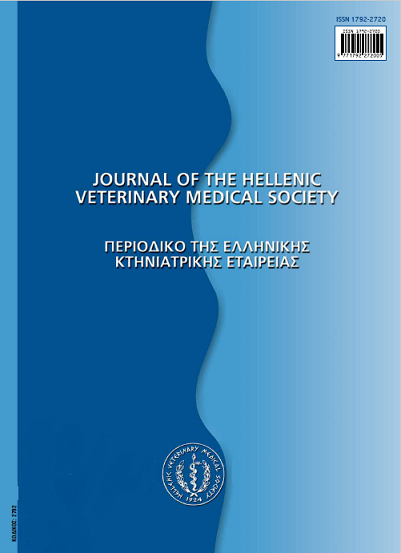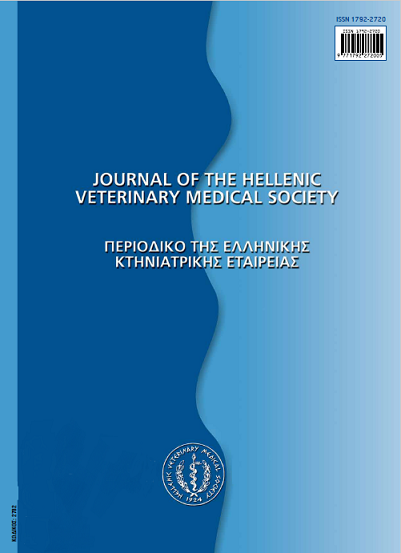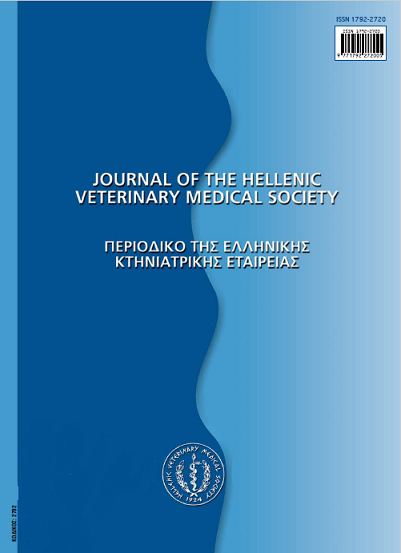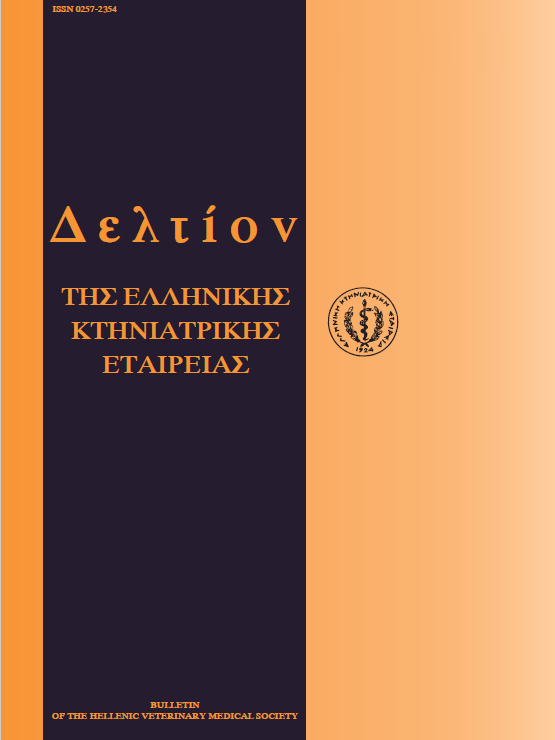Κοροναϊός του σκύλου: ένας όχι ‘αθώος’ ιός

Résumé
Ο Κοροναϊός του σκύλου αποτελεί σημαντικό αιτιολογικό παράγοντα οξείας διάρροιας σε σκύλους, ιδιαίτερα σε κουτάβια. Κύριο χαρακτηριστικό του εν λόγω ιού, όπως και όλων των μελών της οικογένειας των κοροναϊών, είναι η έντονη γενετική ποικιλότητα, λόγω της συχνής εμφάνισης μεταλλάξεων και γενετικών ανασυνδυασμών. Αναφέρονται δύο τύποι Κοροναϊού του σκύλου, ο τύπος Ι και ο τύπος ΙΙ. Ο τύπος Ι περιλαμβάνει στελέχη, τα οποία εμφανίζουν μεγάλη γενετική ομοιότητα με στελέχη του Κοροναϊού της γάτας, ενώ στον τύπο ΙΙ ταξινομούνται τα ‘κλασικά’ στελέχη του ιού. Επιπλέον, τα στελέχη που ανήκουν στον τύπο ΙΙ διακρίνονται σε δύο υποτύπους, τον IIa, στον οποίο κατατάσσονται τα ‘κλασικά’ στελέχη, και τον ΙΙb, στον οποίο ανήκουν στελέχη που αναδύθηκαν μετά από ανασυνδυασμό του Κοροναϊού του σκύλου με τον Ιό της μεταδοτικής γαστρεντερίτιδας των χοίρων. Η λοίμωξη από Κοροναϊό του σκύλου συνήθως εκδηλώνεται με ανορεξία, κατάπτωση, λήθαργο και γαστρεντερικά συμπτώματα, όπως έμετο, ειδικά τις πρώτες δύο ημέρες, και διάρροια. Το ποσοστό θνητότητας είναι χαμηλό, ιδιαίτερα σε ενήλικες σκύλους, οι οποίοι συνήθως δεν εμφανίζουν συμπτώματα. Τα περισσότερα ζώα συνήθως αναρρώνουν μετά από 7-10 ημέρες. Η συνύπαρξη μολύνσεων από άλλους ιούς, βακτήρια ή παράσιτα μπορεί να οδηγήσει σε εκδήλωση πιο βαριάς κλινικής εικόνας.
Σήμερα, έχει επιβεβαιωθεί η παγκόσμια εξάπλωση του Κοροναϊού του σκύλου και η συσχέτισή του με κρούσματα συνήθως ήπιας, οξείας διάρροιας. Ωστόσο, τα τελευταία χρόνια έχουν ανιχνευτεί, στην Αυστραλία και την Ευρώπη, στελέχη, τα οποία σχετίστηκαν με την πρόκληση κρουσμάτων επιζωοτικής θανατηφόρου γαστρεντερίτιδας. Η ανάλυση του γονιδιώματος αυτών των στελεχών ανέδειξε χαμηλό ποσοστό ομοιότητας με τα στελέχη αναφοράς, οδηγώντας στο συμπέρασμα πώς παραλλαγμένα στελέχη Κοροναϊού του σκύλου φαίνεται να σχετίζονται με εκδήλωση έντονων κλινικών συμπτωμάτων. Επιπλέον, σε αντίθεση με τη θεωρία που υποστήριζε ότι η λοίμωξη από Κοροναϊό του σκύλου περιοριζόταν στο πεπτικό σύστημα, την τελευταία δεκαετία απομονώθηκαν στελέχη ιδιαίτερου ενδιαφέροντος, με δυνατότητα να διαπερνούν τον εντερικό φραγμό, προκαλώντας συστηματική λοίμωξη στα ζώα, με συνήθως θανατηφόρα κατάληξη. Τα στελέχη αυτά προσέλκυσαν γρήγορα το ενδιαφέρον, με την έρευνα να εστιάζεται στην πρόκληση πειραματικών μολύνσεων, στην ανίχνευση γενετικών δεικτών διαφοροποίησής τους από τα κοινά στελέχη, καθώς και στην ανεύρεση μέσων προφύλαξης έναντι αυτών. Η ανίχνευση στελεχών που διαπερνούν τον εντερικό φραγμό σε πολλές περιοχές της Ευρώπης (περιλαμβανομένης της Ελλάδας) υποδηλώνει την κυκλοφορία νέων βιοτύπων του ιού. Η έντονη γενετική ποικιλότητα των στελεχών, η ύπαρξη σύμμικτων μολύνσεων και η έλλειψη απόλυτα διασταυρούμενων αντιδράσεων μεταξύ των τύπων και των υποτύπων του ιού εγείρουν ερωτηματικά σχετικά με την αποτελεσματικότητα των υπαρχόντων εμβολίων.
Article Details
- Comment citer
-
NTAFIS (Β. ΝΤΑΦΗΣ) V., PAPANASTASSOPOULOU (Μ. ΠΑΠΑΝΑΣΤΑΣΟΠΟΥΛΟΥ) M., & XYLOURI (E.ΞΥΛΟΥΡΗ) E. (2017). Κοροναϊός του σκύλου: ένας όχι ‘αθώος’ ιός. Journal of the Hellenic Veterinary Medical Society, 64(1), 57–68. https://doi.org/10.12681/jhvms.15480
- Numéro
- Vol. 64 No 1 (2013)
- Rubrique
- Review Articles
Authors who publish with this journal agree to the following terms:
· Authors retain copyright and grant the journal right of first publication with the work simultaneously licensed under a Creative Commons Attribution Non-Commercial License that allows others to share the work with an acknowledgement of the work's authorship and initial publication in this journal.
· Authors are able to enter into separate, additional contractual arrangements for the non-exclusive distribution of the journal's published version of the work (e.g. post it to an institutional repository or publish it in a book), with an acknowledgement of its initial publication in this journal.
· Authors are permitted and encouraged to post their work online (preferably in institutional repositories or on their website) prior to and during the submission process, as it can lead to productive exchanges, as well as earlier and greater citation of published work.





